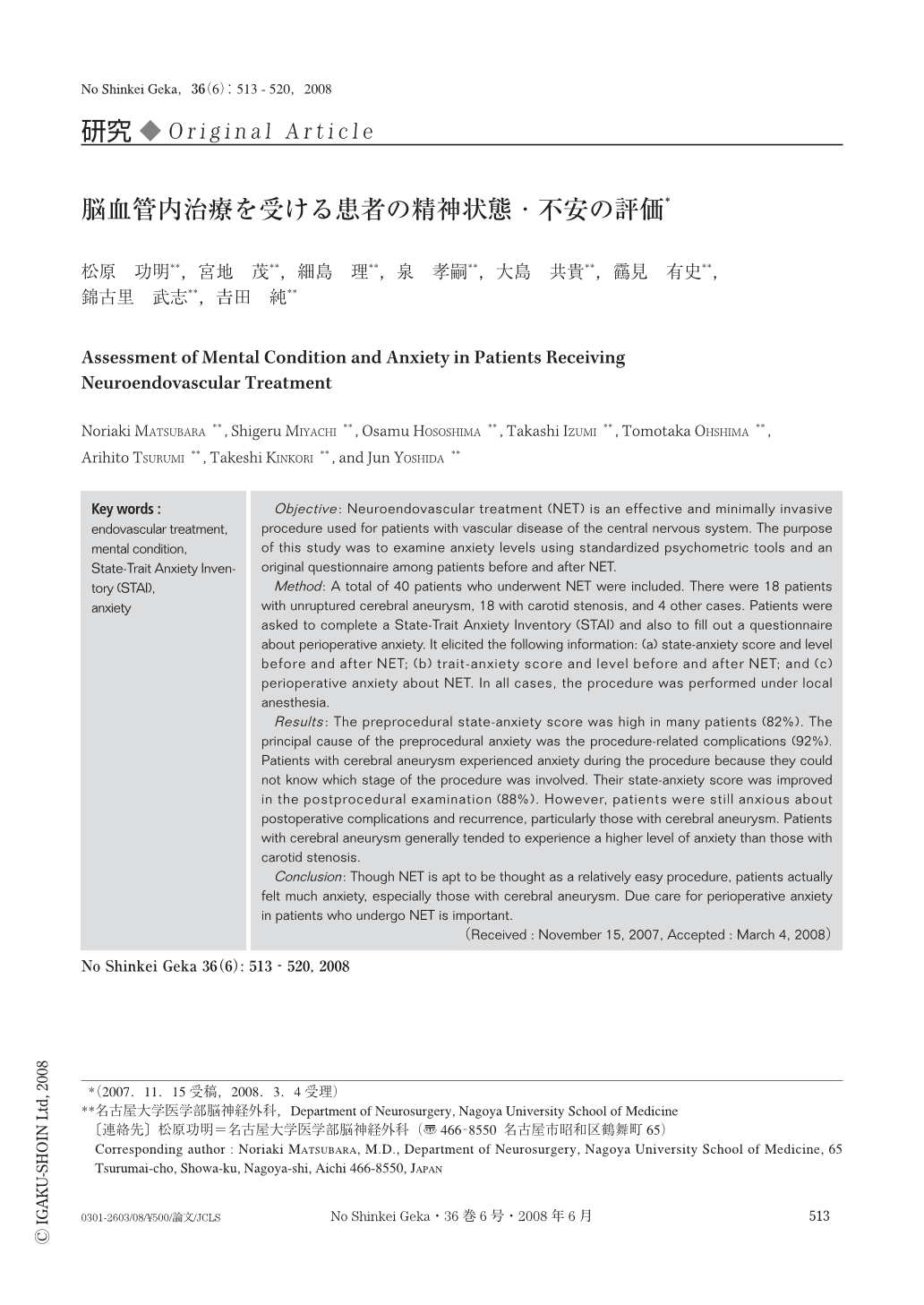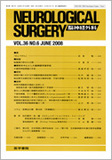Japanese
English
- 有料閲覧
- Abstract 文献概要
- 1ページ目 Look Inside
- 参考文献 Reference
Ⅰ.は じ め に
従来,中枢神経領域の外科的治療は開頭による直達手術がメインであったが,近年の治療技術の向上やデバイスの進歩により血管内治療が行われる機会が広まってきている.また,インターネット等の情報手段の普及により,局所麻酔下に行われる低侵襲性を求めて血管内治療が希望されることもある.
今回われわれは,局所麻酔下に脳血管内治療を受ける患者が周術期に実際どのくらい不安を感じているかについて,標準的な不安スケールであるState-Trait Anxiety Inventory(STAI)日本語版と不安に関する独自アンケートを用いて評価した.
Objective: Neuroendovascular treatment (NET) is an effective and minimally invasive procedure used for patients with vascular disease of the central nervous system. The purpose of this study was to examine anxiety levels using standardized psychometric tools and an original questionnaire among patients before and after NET.
Method: A total of 40 patients who underwent NET were included. There were 18 patients with unruptured cerebral aneurysm, 18 with carotid stenosis, and 4 other cases. Patients were asked to complete a State-Trait Anxiety Inventory (STAI) and also to fill out a questionnaire about perioperative anxiety. It elicited the following information: (a) state-anxiety score and level before and after NET; (b) trait-anxiety score and level before and after NET; and (c) perioperative anxiety about NET. In all cases, the procedure was performed under local anesthesia.
Results: The preprocedural state-anxiety score was high in many patients (82%). The principal cause of the preprocedural anxiety was the procedure-related complications (92%). Patients with cerebral aneurysm experienced anxiety during the procedure because they could not know which stage of the procedure was involved. Their state-anxiety score was improved in the postprocedural examination (88%). However, patients were still anxious about postoperative complications and recurrence, particularly those with cerebral aneurysm. Patients with cerebral aneurysm generally tended to experience a higher level of anxiety than those with carotid stenosis.
Conclusion: Though NET is apt to be thought as a relatively easy procedure, patients actually felt much anxiety, especially those with cerebral aneurysm. Due care for perioperative anxiety in patients who undergo NET is important.

Copyright © 2008, Igaku-Shoin Ltd. All rights reserved.


